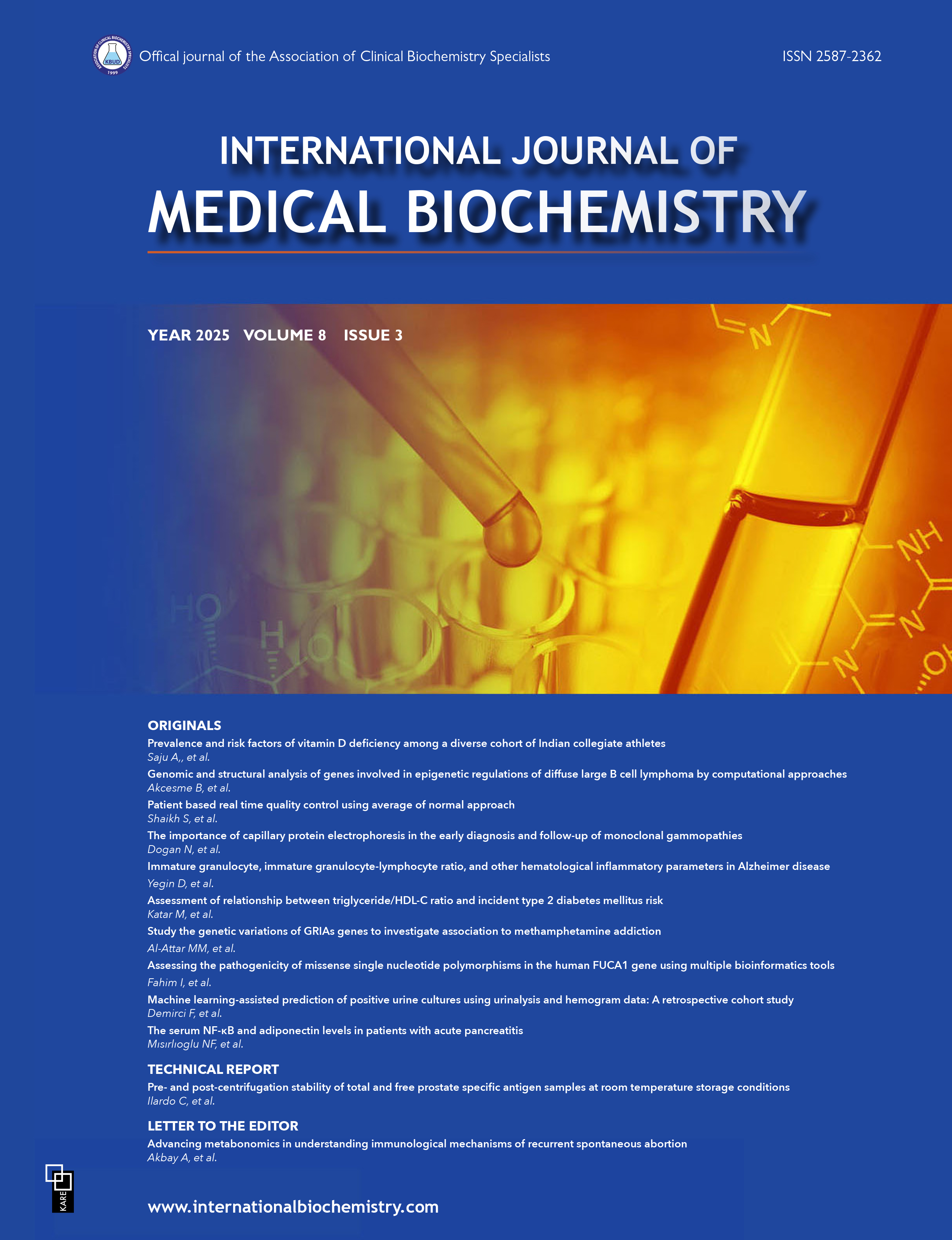Genomic and structural analysis of genes involved in epigenetic regulations of diffuse large B cell lymphoma by computational approaches
Betül Akçeşme1, Abas Sezer21Department of Genetics and Bioengineering, International University of Sarajevo Faculty of Engineering and Natural Sciences, Sarajevo, Bosnia and Herzegovina; Department of Medical Biology, University of Health Sciences, Hamidiye Faculty of Medicine, Istanbul, Türkiye2Department of Genetics and Bioengineering, International University of Sarajevo Faculty of Engineering and Natural Sciences, Sarajevo, Bosnia and Herzegovina
INTRODUCTION: Despite the advances and huge efforts in determination of efficient therapy options for diffuse large B cell lymphoma (DLCBL), various issues, including resistance and toxicity, are among the main concerns. Additional contributor to the poor prognosis is genomic complexity of DLBCL, where high number of mutations are associated with the DLBCL pathogenesis. Epigenetic regulations expand the complexity of gene expression process by various mechanisms, including histone deacetylation and DNA methylation, without altering the DNA sequence.
METHODS: Present study focused on analysis of genes involved in epigenetic regulations in DLBCL by using computational approaches, including sequence and structure-based predictions. C-bioportal database was used to find mutations, which are further analyzed by structural bioinformatic tools, including PredictSNP, SNPs&GO, AlphaMissense and DynaMut servers.
RESULTS: Our results showed that mutations R1446H/C and Y1503F/D of CREBBP, L415P, H1451Y, Y1467D of EP300 and Y641N/F of EZH2 proteins are among most common mutations in DLBCL, with the mutations mostly being putative drivers and having a negative impact on the sequence and structure of the proteins.
DISCUSSION AND CONCLUSION: The understanding of correlation of identified mutations in our study and DLBCL pathogenesis could contribute to the enhanced prediction, diagnosis and treatment of DLBCL. Identification of critical epigenetic mutations might enhance the efficiency and development of epigenetic drugs, further leading to better and more effective targeted therapies. However, further in-vitro and in-vivo investigations are required to verify our findings based on computational methods.
Manuscript Language: English






